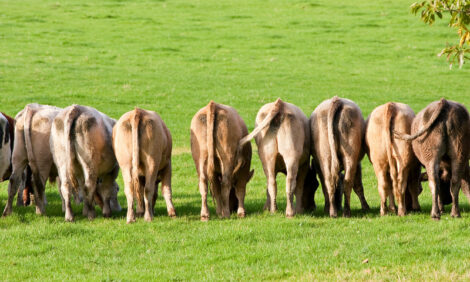



Consumers Milk Prices Vs Producer Earnings
US - Dairy consumers who view prices they pay for milk and dairy products at the store as high may benefit from an explanation of the returns dairy producers receive from the store-shelf price.That’s according to South Dakota Cooperative Extension Dairy Specialist Alvaro Garcia, who said too often, consumers see expanding dairy farms, or the growing number of these operations, as indicators of a favourable economy for the dairy producers. Although this is true, Mr Garcia said expansion also happens as an attempt to maintain cash flow when economic conditions are not that favorable.
“From January through October of this year, average milk prices on the shelf were about $3.50 per gallon, and one gallon is roughly eight pounds of milk,” Mr Garcia said. “The price consumers pay per pound of milk produced would be approximately 44 cents or $44 for every one hundred pounds of milk. But most people who buy milk are often completely unfamiliar with how much of this price is actually net profit for the producers.”
Mr Garcia said the average base price of milk that was paid to producers from January to October 2010 was $15.20 per hundred pounds of milk. This figure is based on the price of Class III milk, which contains 3.5 per cent butterfat, 3.1 per cent protein, and 5.9 per cent other solids.
“The price producers actually receive is referred to as the ‘mailbox price’ and it differs from the Class III price, depending on individual farm differences in milk composition, quality, producer price differential, and plant premiums,” said Mr Garcia. “The difference between Class III prices and mailbox prices is called the ‘mailbox differential’ and it usually changes monthly.”
Mr Garcia explained that if the base price was on average $15.20 and the price differential is $1.50, producers actually receive about $16.70.
“But this doesn’t tell the whole story because the cost of production has to be factored in before we know how much money producers made,” he said. “Operating costs are incurred daily as part of the process. Examples include feed costs, labour, bedding, energy use, cow health, and other expenses.”
In addition, Mr Garcia said there are other costs that are not included in the operating costs.
“The opportunity cost of unpaid labor, including an estimate on the value of the producer’s time, the opportunity cost of land that could be rented out, taxes, insurance, depreciation, and general farm overhead, they all figure into the equation,” said Mr Garcia. “The largest components of operating costs are feed and labor. This is the reason why some dairy economists look at a formula called IOFC, or income over feed costs, as a measure of dairy profitability.”
Mr Garcia said most dairy producer’s total operating costs have been about $14.90, or about 3 cents below the average base milk price. This is about $1.80 below the average mailbox price as well.
“The daily feed costs per cow for South Dakota dairy producers are roughly between $4-5, but the costs that really matter are per 100 pounds of milk,” said Mr Garcia. “Cows that eat $5 per day and produce 70-80 pounds of $16.70 milk return between $6.70-$8.36 income over feed costs.”
Cows that average 70 pounds of milk daily, which is slightly over the average milk production in the state, generate net revenues of $1.30, almost 2 cents per pound, or 16 cents per gallon. This is only five per cent of what the consumer paid for a gallon of milk at the store.
“This five per cent is the approximate net profit the producer makes on a sale in a store,” Mr Garcia said. “When consumers are informed of this, they are often surprised, but hopefully they will consider that the next time they see a price they view as high, or higher than they remember the last time they were shopping.”


